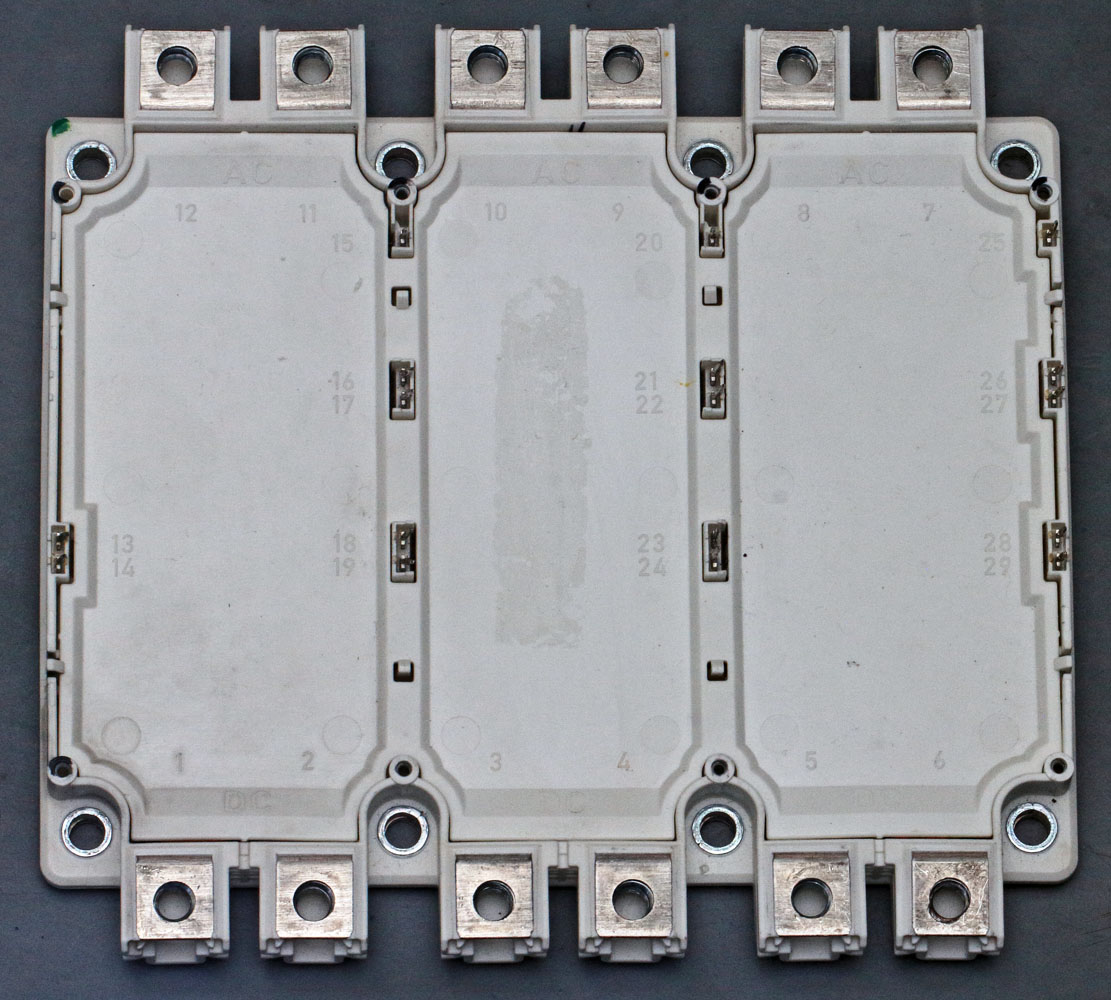
You need more power? Take a Infineon EconoPACK!
The FS300R12OE4 contains a B6 bridge using the IGBT4 generation.
There are mounting holes to screw your gate driver board directly on top of the module. The low power pins are pressfit pins.
These modules are used a lot in motor inverters, photovoltaic inverters or USV.
(Thanks to capt bullshot!)

The name FS300R12OE4 contains a lot of information:
- FS: sixpack configuration
- 300: 300A maximum collector current
- R: reverse conducting
- 12: 1200V maximum Vce
- O: mechanical design
- E4: fast Trench-IGBTs with low Vcesat
The dot matrix code contains the number 00009 034011 80690664 1403
- 00009 is the Module Serial Number
- 034011 is the Module Material Number
- 80690664 is the Production Order Number
- 1403 is the date code
(datasheet information)
Datasheet tells you some more:
1200V is the maximum Vce. The isolation test voltage is 2,5kV. 300A are ok if the case is at 100°C. At 25°C a current of 460A is allowed. The package can dissipate up to 1650W. The thermal resistance between one IGBT and the case is just 0,091K/W (with isolation between IGBT and case!). Maximum peak current (1ms) is 600A. The module limits the short circuit current at 1200A (800V). At 150°C and 300A of collector current Vcesat is 2,05V. At 1200V the residual current can be up to 3mA.
Gate-Emitter-Voltage has to stay within +/-20V. At 15V the gate charge is 2,25µC. Datasheet tells us there is a integrated gate resistor with 2,5Ω. Input capacitance is 18,5nF. Reverse transfer capacitance is 1,05nF.
The freewheeling diode can conduct 300A too. At 300A and 25°C the forward voltage is 1,65V typ, 2,10V max.
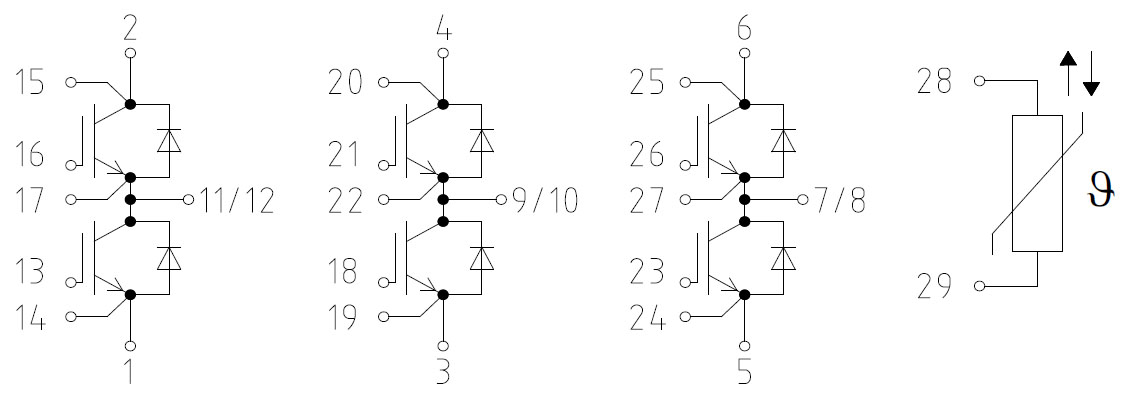
The datasheet shows the wiring of the module. Six IGBTs are connected as a B6 bridge. Parallel to the transistors are free-wheeling diodes. An NTC enables a temperature measurement.
Besides the absolutely necessary contacts the module has some auxiliary contacts. Each gate contact has a so-called auxiliary emitter. With this auxiliary emitter a clean gate-emitter voltage can be set which is just slightly distorted by the load current.
Further auxiliary contacts are located at the collectors of the upper transistors. Since the positive supply potential is present there it is possible to supply the gate driver circuit without much effort. An important function for the module itself is the so-called desaturation detection. This monitors the voltage drop across the IGBT. In the event of a problematically high current flow, the transistor leaves the saturation area and the voltage drop increases. If such a voltage rise occurs, the transistor can be shut down before damage occurs. The collectors of the lower transistors are accessible via the auxiliary emitters of the upper transistors.
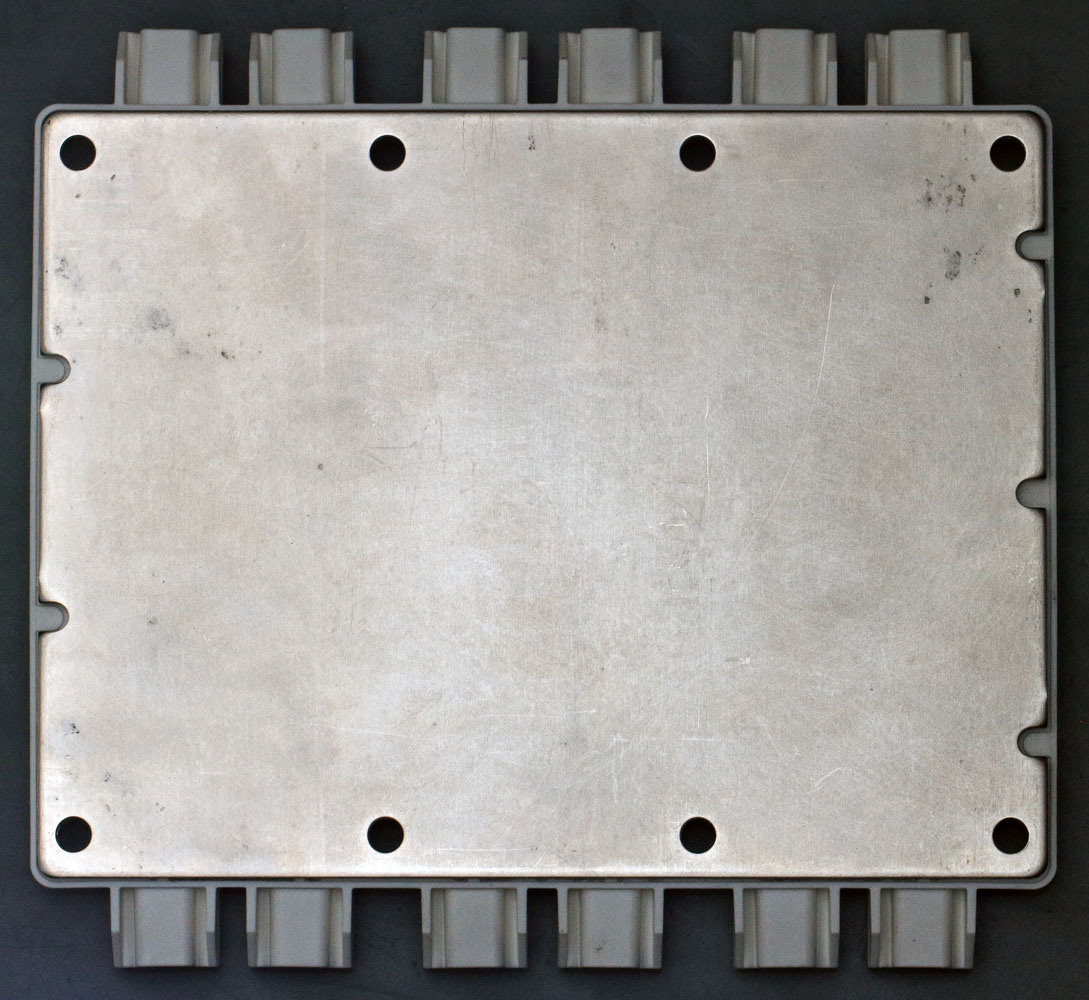
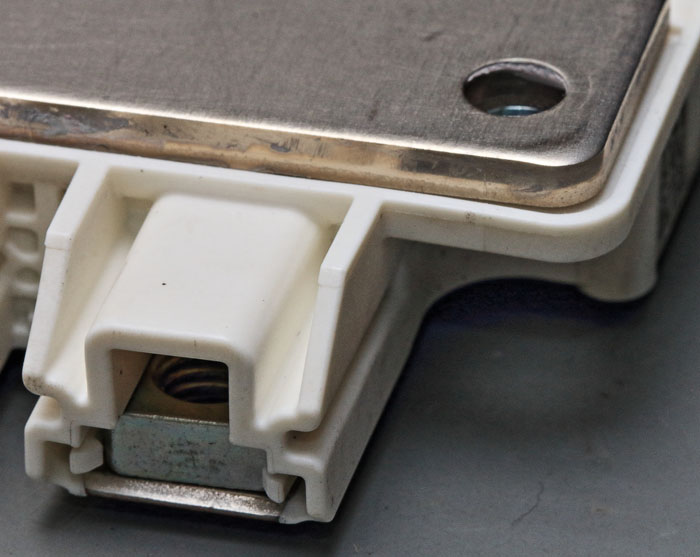
Quite a massive cooling plate.

There are eight hooks. Bending the hooks you can remove the top cover.
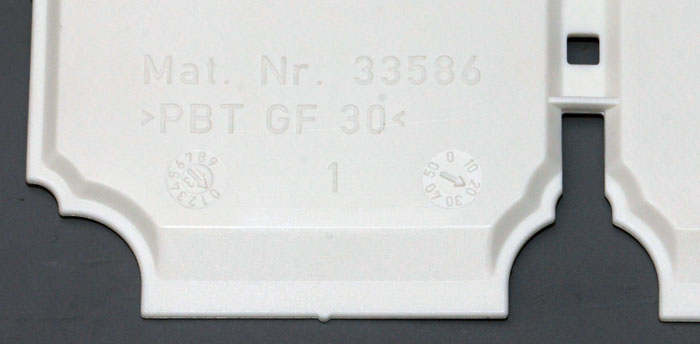
PBT GF30, Polybutylenterephthalat with 30% of fiberglass. PBT is similar to PET.
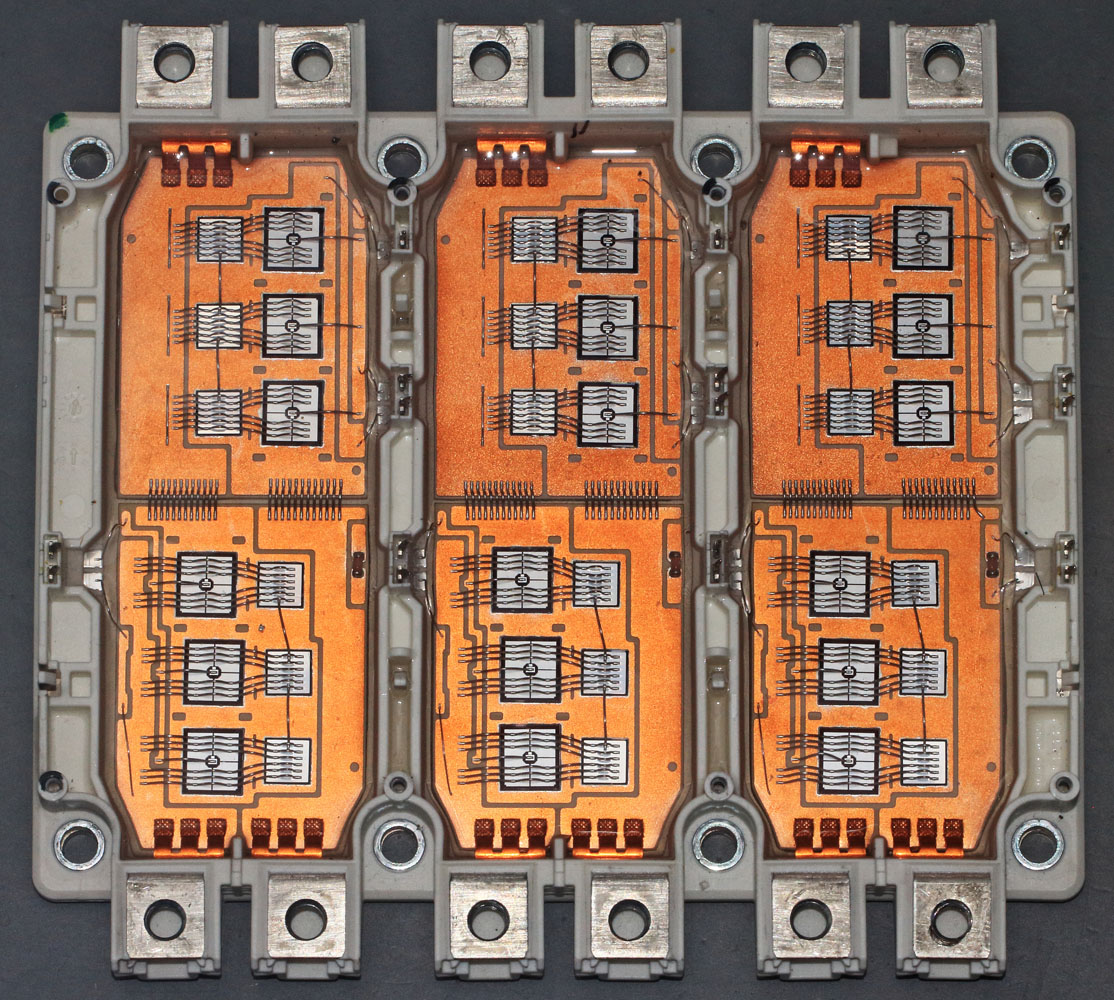
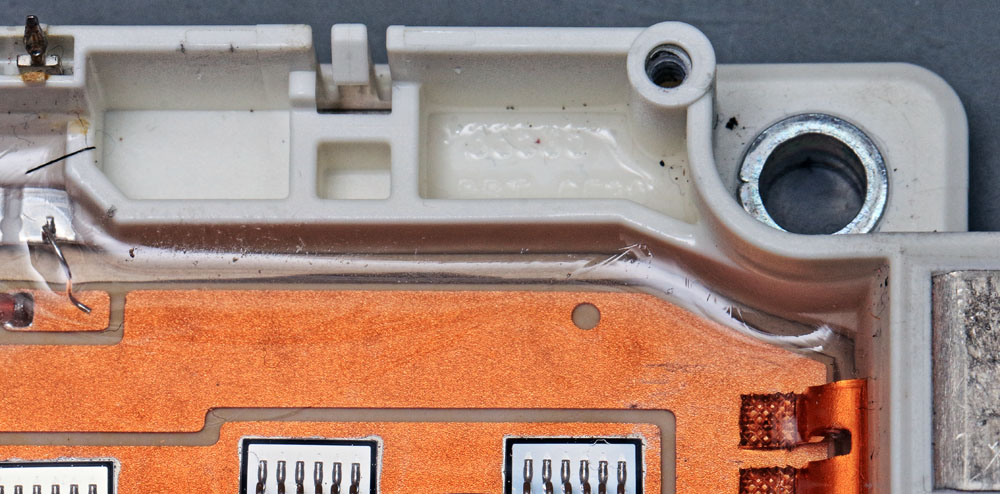
The active parts and the bondwires are protected with a transparent silicone gel potting.
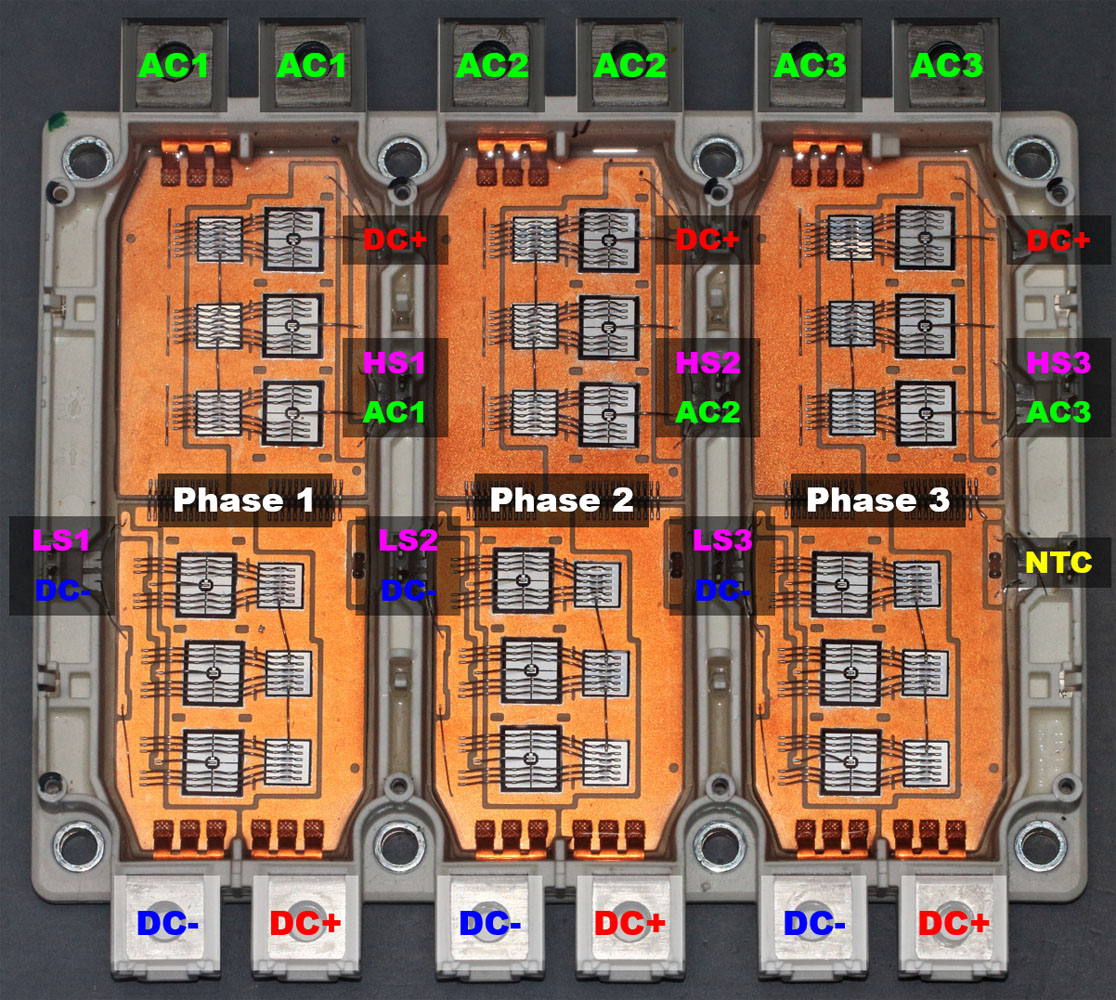
The three phases are clearly visible. Each phase is supplied individually via the two lower screw-on points. The two upper screw contacts represent the output of each push-pull stage.
On the left side of each phase the low-side transistors are controlled. The high-side transistors are controlled on the right side. Furthermore, DC-, DC+ and AC can be connected via press-fit contacts at each phase. On the right phase there are the contacts of the NTC, which is used for temperature measurement.
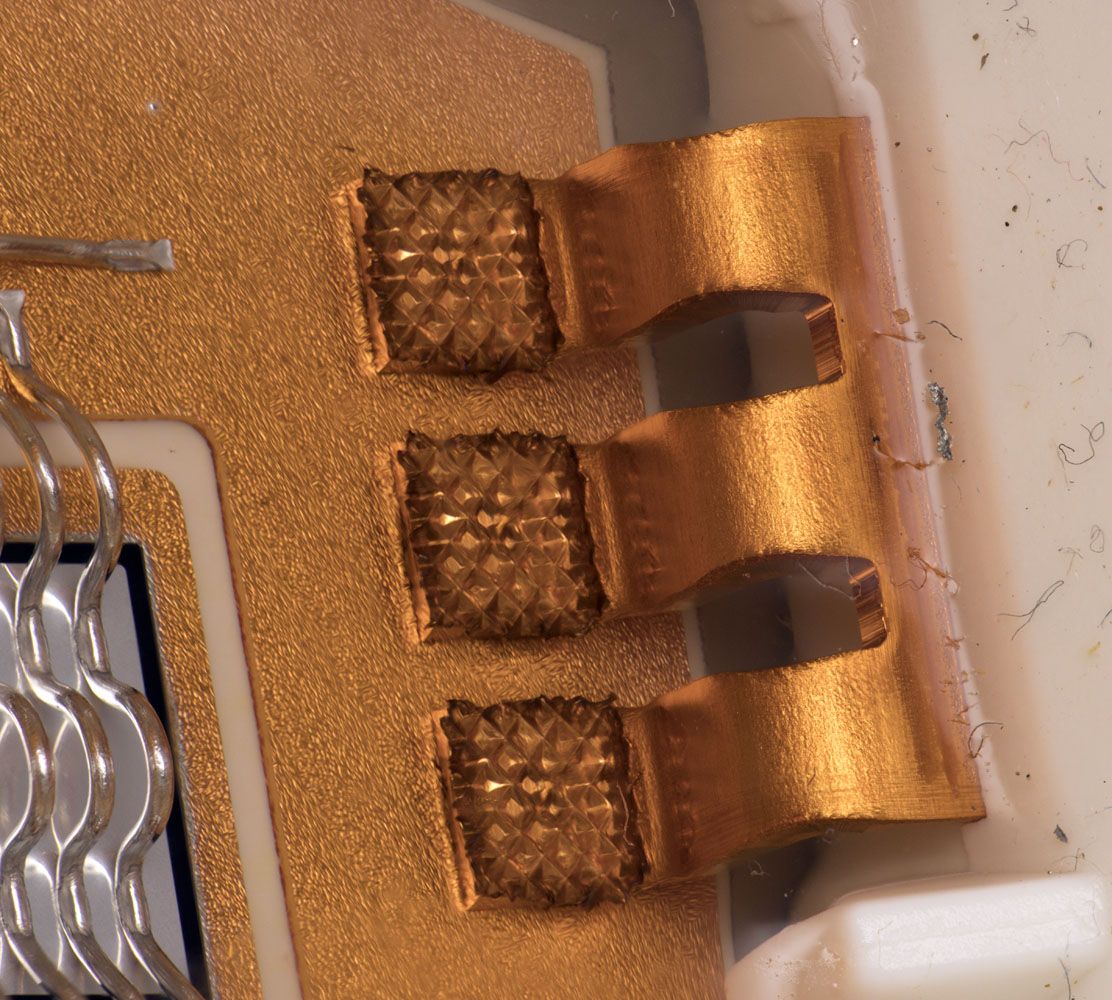
This is a high power contact! Datasheet states a lead resistance of 1,1mΩ.
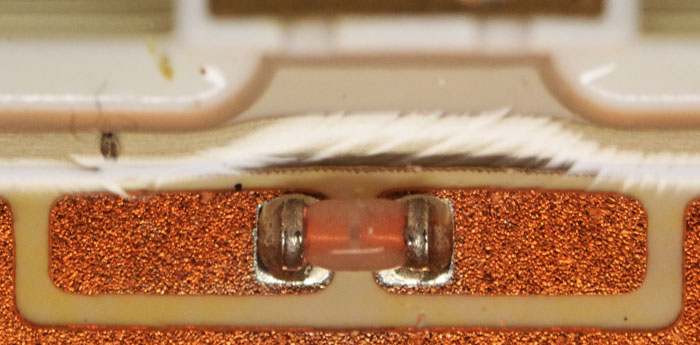
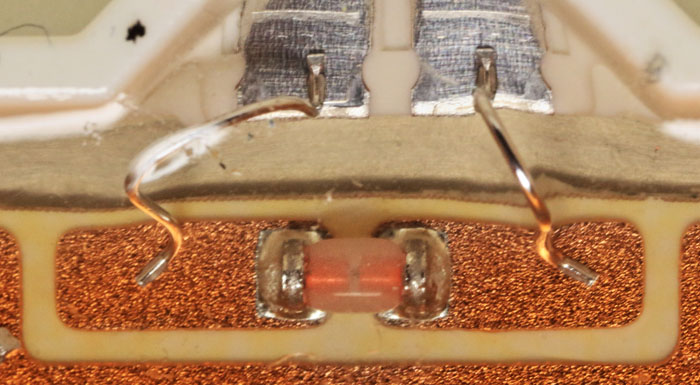
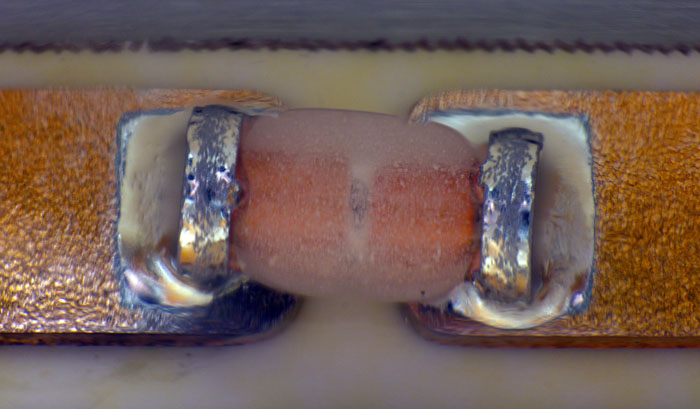
The NTC is packaged in a MELF housing. The temperature measurement is connected just at one phase, but the NTCs are present in each phase. In this way, each DBC can be set up in the same way. The temperature measurement just serves to check the temperature of the module approximately, local hot spots cannot be detected.
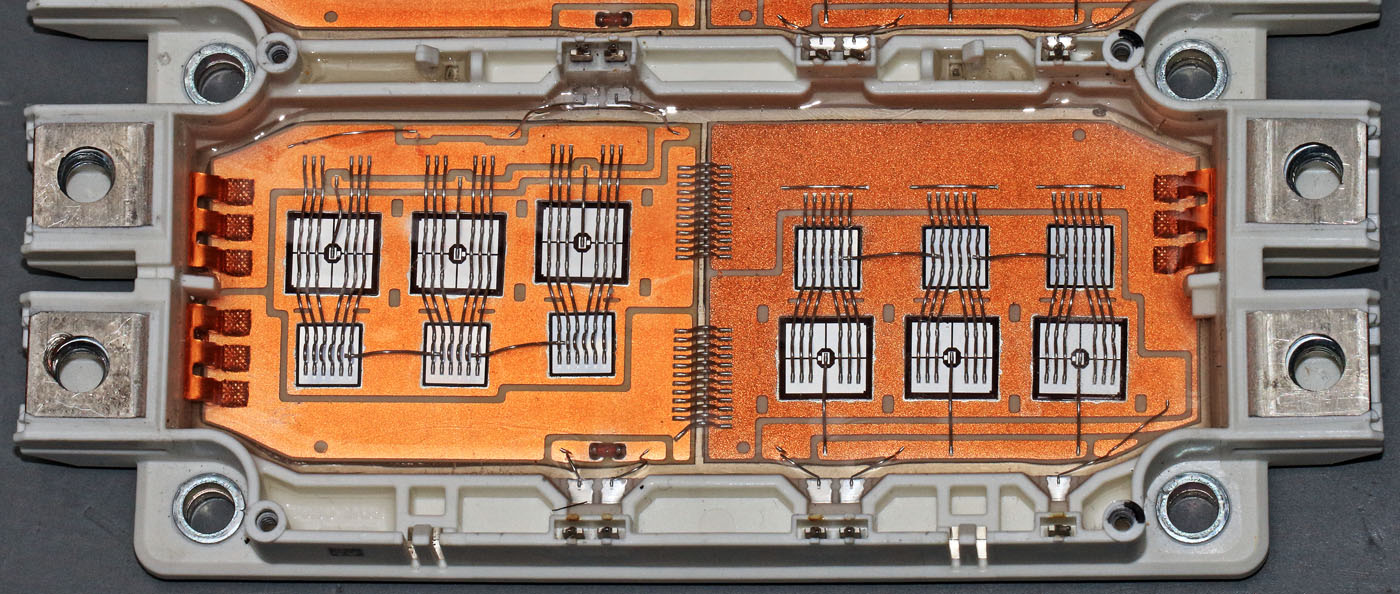
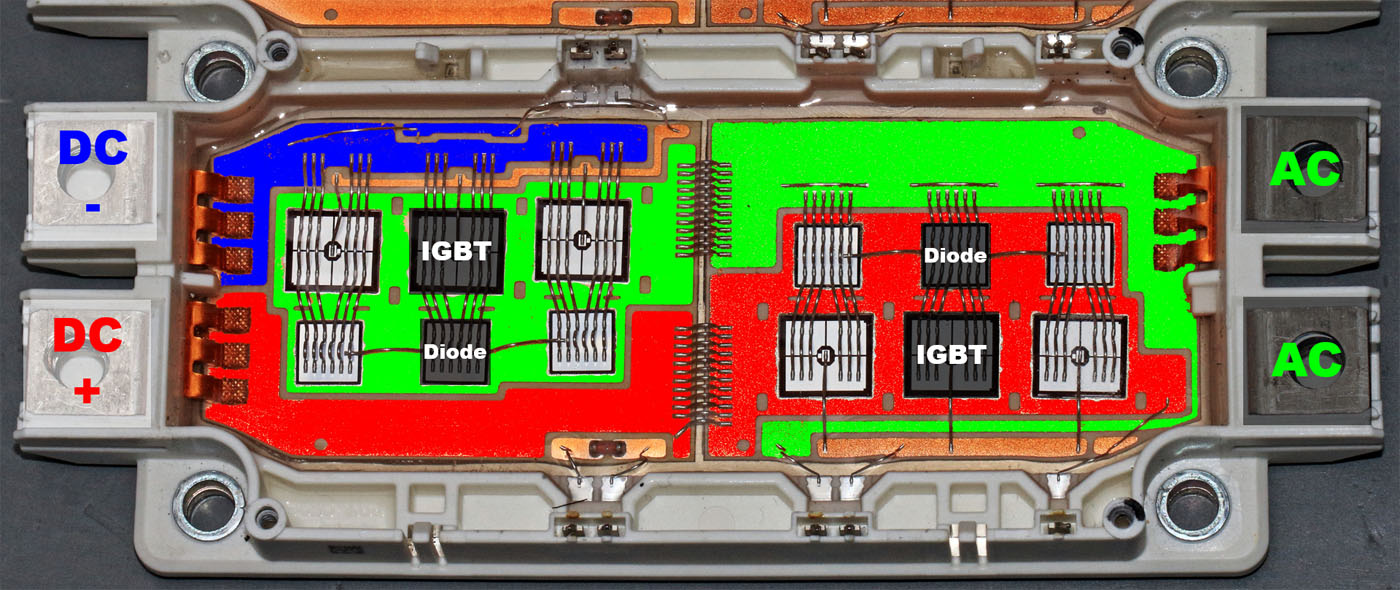
Each phase is composed of a lowside block (left) and a highside block (right). Lowside and highside each consist of three IGBT dies and three diode dies.
The arrangement of the components must meet many requirements. One important consideration is leakage inductance, which the datasheet specifies as typically 20nH. An inductance as low as possible reduces the switching losses. For this reason, among others, the DC link capacitor is usually directly and massively connected to the module. Another important point is a uniform current distribution across the individual transistors and, in the case of transient processes, also a uniform voltage distribution. Furthermore, the semiconductors have to be cooled reasonably evenly.
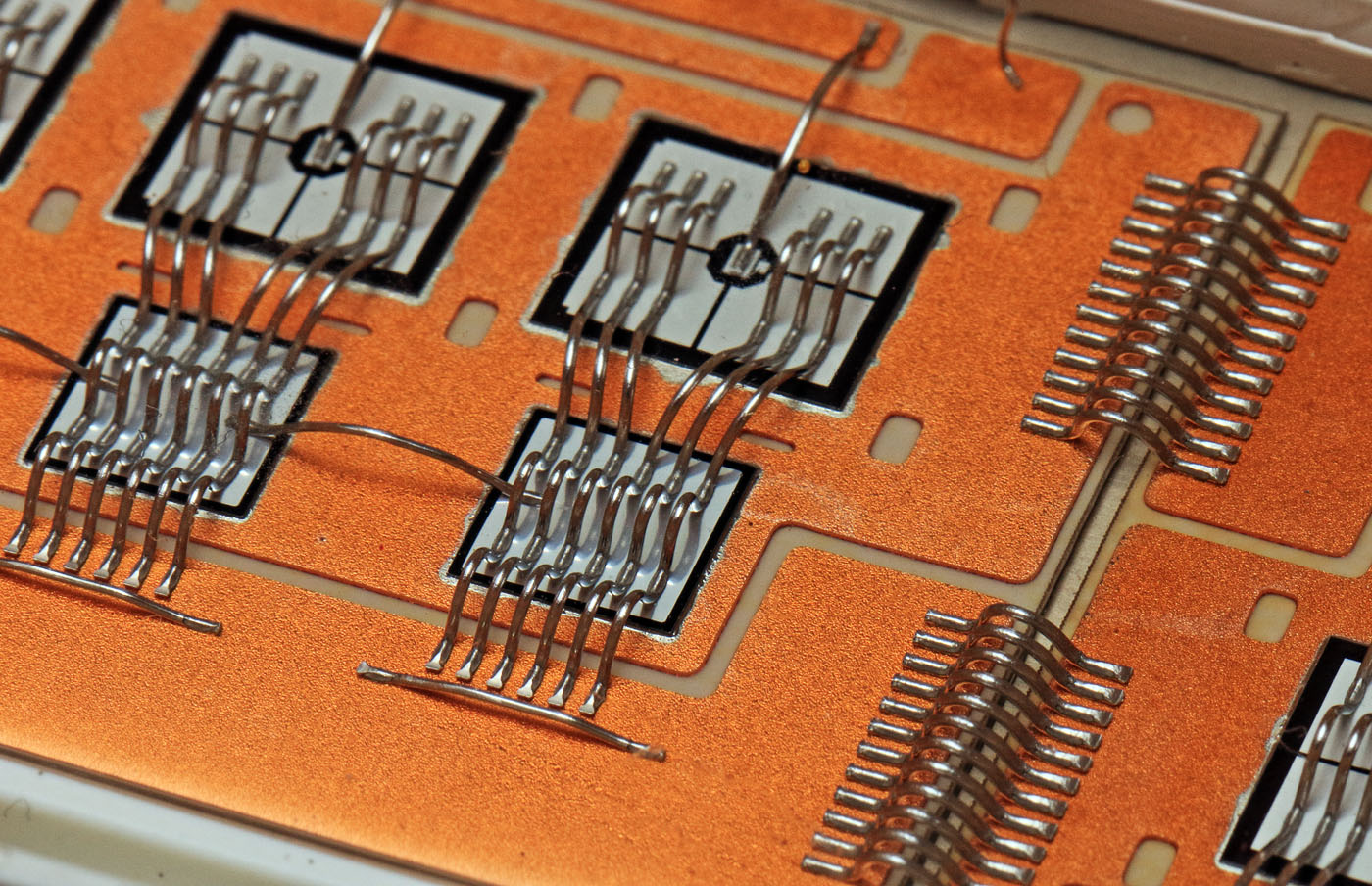
Here you can see the DBC a little better. The ceramic is aluminium oxide.
(...)